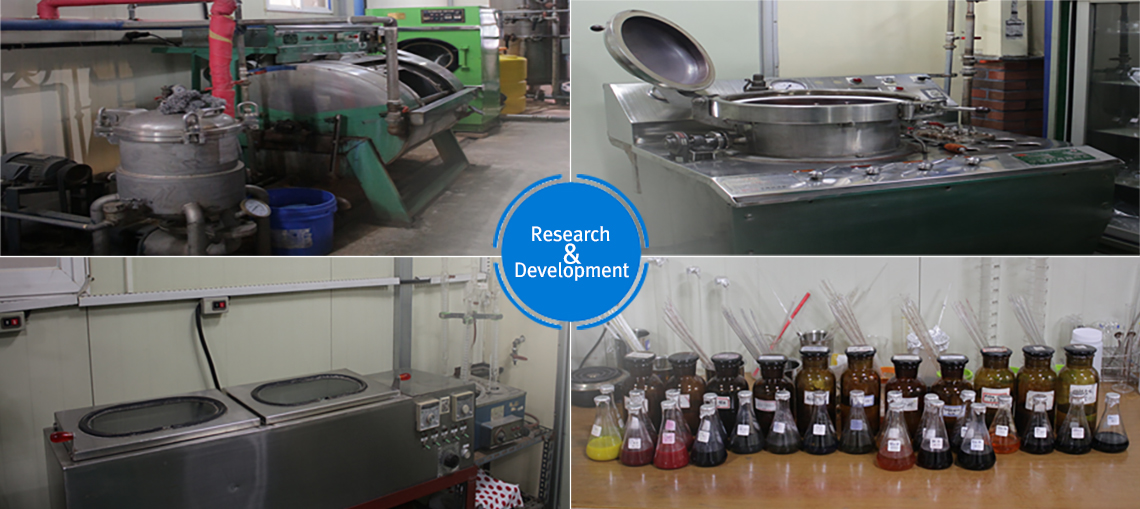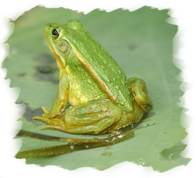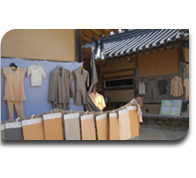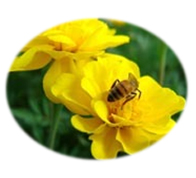Technology Research Institute
Since its establishment in March 2000, JAYEON has formed its own research and development team and has been consistently engaged in research and development.
In February 2013, JAYEON established a corporate research institute.

We have focused on research and development of new technologies in the field of natural dyeing, enhancing dyeing techniques such as mineral dyeing and plant dyeing. Additionally, the dyeing processes for various chemical fibers, including polyester and nylon, are conducted on-site after rigorous testing with the research institute’s equipment, allowing us to provide superior quality.

JAYEON's Natural Dyeing
WHAT IS NATURAL DYEING?
It is said that as humans began to wear clothes made from natural cellulose and natural protein fibers, they opened their eyes to color. In clothing, color can be connected to human emotions and feelings, and it holds significant meaning in the history of clothing. The Eastern philosophical concept of Yin-Yang and the Five Elements has greatly influenced our lives, and colors in clothing carry various meanings
In this way, humans can be said to have created natural dyeing by applying the term ‘color’ to fibers and using animals, plants, and minerals to impart color.

Traditional Colors Based on the Principles of the Five Elements
Our traditional color concept is based on a cosmology of yin-yang and the five elements that transcends the scope of natural perception. It recognizes and utilizes five primary colors and five secondary colors according to the principles of the five elements.
In other words, the east is represented by the Blue Dragon with the color blue, the west by the White Tiger with the color white, the south by the Vermilion Bird with the color red, the north by the Black Tortoise with the color black, and the center by yellow, which makes up the five primary colors. Additionally, five secondary colors were used: Turquoise, Green, pink, purple, and yellow.
These ten colors have been the fundamental colors of our culture, carrying on traditions, and through the combination of colors, they have observed etiquette, indicated gender distinctions and social status, and represented the position of the wearer.

When you look at the color names
Blue represents the east according to the Five Elements theory and was widely used by the royal court, scholars, and commoners. It was dyed using indigo and the leaves of Common dayflower.
White represents the west and was primarily used by commoners. It was used after refining and bleaching.
Red indicates the south and symbolizes virtue as it is associated with the element of fire generating earth (火生土) in the Five Elements theory. It was used as the royal color for the king’s robes and official attire. Dyes were made from Safflower, Redbud, and Schisandra.
Yellow is located at the center in the Five Elements theory and refers to the earth element (土人). It symbolizes nobility, and its use was prohibited for common people. Dyes were made from gardenia, turmeric, amur cork tree and clove.
Black indicates the north in the Five Elements theory, symbolizes water (水), and represents the virtue of yin and yang. It was primarily dyed using charcoal powder and tree bark.
In this way, traditional dyeing in our country has transformed into beautiful natural colors by applying the concepts of Yin-Yang, and the Five Elements, creating the aesthetic beauty of the colors in our clothing.
Materials for Natural Dyeing
Natural dyes can be classified into materials from plants, animals, and minerals. Plant dyes refer to pigments found in the leaves, flowers, fruits, bark, heartwood, and roots of plants. Animal dyes can be derived from animal blood or juices, cochineal, and kermes. Mineral dyes include various stone powders, loess, mud, charcoal, volcanic ash, and other earth and mineral substances.
Classification of Natural Dyeing
– Plant Dyes
Plant dyes are derived from the leaves, flowers, fruits, bark, heartwood, and roots of plants. They can be categorized into monochromatic dyes, which can dye only one color, and polychromatic dyes, which can produce various colors using different mordants.
Monochromatic dyes can further be classified based on the dyeing method into direct, exhaust, basic, and flame dyes.

monochromatic dyes
- Direct Dyes: These are plant dyes extracted from the flowers, leaves, roots, bark, heartwood, and fruits of plants. Examples include gardenia, turmeric, and amur cork tree
- Vat Dyes: These dyes are made by reducing insoluble pigments with alkali and hydrosulfite, which then oxidize in the air to revert to their original insoluble pigments. Indigo dye is a representative example.
- Alcalinity Dyes : These dyes work well on animal fibers but require pre-mordanting with tannic acid for plant fibers. Examples include amur cork tree and coptis, which can cause precipitation when mixed with other dyes.
- Flame dyeing: It can be dyed using mordants, and examples include common dayflower, hibiscus, strawberry, and sulfur.
polychromatic dyes
Most plant dyes fall into this category, and they change and develop various colors through the use of mordants. Numerous plants are included, such as madder, rubia, indigo, chestnut, acorn, common dayflower, rubus, pomegranate, plum tree, mugwort, camellia, and turmeric. Methods of extraction include heating or crushing the plants for direct dyeing.
– Animal Dyes
Animal dyes are obtained from the animal kingdom, including cochineal, kermes, purple snail, rubus, and lac. These dyes can be classified as polychromatic and are used in dyeing along with mordants.
– Mineral dyes
Mineral dyes can be divided into inorganic and organic pigments, with clay being a representative example. Inorganic pigments were traditionally made using ingredients like glutinous rice porridge, glue, and animal fats, but currently, soybean juice is widely used. Examples include loess, lead white, vermilion, ultramarine, and mud. Organic pigments can be considered as resins, which are extracted by dissolving dyes with various chemicals to make them water-soluble, such as lead, red, cochineal, and resins.
Mordants are neutral metal compounds formed by the exchange of hydrogen and metals through the neutralization of acids and alcalinity. An example of an iron mordant is ferrous sulfate (FeSO4·7H2O), where the hydrogen (H2) in sulfuric acid (H2SO4) is replaced by a metal (Fe). When a pigment meets a mordant, the acid within the mordant is released, allowing the metal to bond with the pigment. Mordants can be described as compounds that help bind plant dyes, which have low affinity for fibers, to the fibers
- Adsorption: The role of attaching the dye to the fiber.
- Fixation: The role of preventing the bonded dye from detaching from the fiber.
- Color development: The process by which color appears, specifically referring to the chemical reaction between the fiber and the metal mordant.
Mordanting Methods
- Pre-mordanting: This method involves pre-adsorbing the mordant onto the fiber before applying the dye. It is preferable for dyeing wool.
- Meta-mordanting: In this method, the mordant is mixed into the dye bath, which can reduce the dye’s fastness. Proper post-treatment is essential, and this method is not suitable for plant dyes.
- Post-mordanting: This method involves adsorbing the dye onto the fiber first and then using the mordant to develop the color. It is suitable for plant dyeing.
Precautions When Using Mordants
- ※ Some mordants, such as chromium and copper sulfate, are toxic, so their use should be avoided whenever possible.
- ※ Ensure that the container for the mordant is clearly labeled, and prohibit use by anyone other than authorized personnel.
- ※ Wear protective gear to avoid skin contact during use.
- ※ When using powdered mordants, wear a dust mask to protect the respiratory system.
- ※ Do not use tools that have been used for mordants for any other purpose.
- ※ Pay attention to the working environment to ensure good ventilation and minimize exposure to contaminated air.
Types of Plant and Mineral Dyes
1. Blue color Plant and Mineral Dyes
Blue plant dyes include indigo, common dayflower, and iris. Green plant dyes can be derived from rhamnus, citrus fruits, acer, cornus, artemisia, sophora, phellodendron, morus, and quercus. Mineral sources include emerald and jadeite, which provide green hues.
2. Red color Plant and Mineral Dyes
Red plant dyes come from rubia, carthamus, zingiber, buddleja, dalbergia, sophora, schisandra chinensis (five-flavor fruit), taxus, and betula. Purple dyes can be obtained from dalbergia, camellia, grapes, persimmons, buddleja, and lithospermum. Mineral sources include bishofite (a type of magnesium salt) and volcanic ash, which provide brown hues, as well as red ochre.

3. Yellow color Plant and Mineral Dyes
Yellow plant dyes include gardenia, cudrania tricuspidata, platanus, onions, phellodendron amurense, coptis, clove, perilla, and curcuma. Brown dyes can be derived from dalbergia, salix, paulownia, castanea, and pinus, which have a wide distribution. Mineral sources include yellow ochre.
4. Black Plant and Mineral Dyes
Black plant dyes include various sources such as indigo, gallnut, pomegranate, cinnamon, yew, redwood, lotus seeds, oebaekja, dried tangerine peel, and oak. Gray dyes come from sources like pomegranate tree, maple, black oak, and others. Mineral sources include Absolute Black, charcoal, and basalt in black color.
In plants, the phenomenon where the color spectrum changes depending on the mordant allows for the same plant to be divided into various color families.
Plant Dyes
- Indigo: Acts as an anticancer agent, cleanses the liver, promotes bile flow, and has stress-relieving effects.
- Gardenia: Acts as an anti-inflammatory, detoxifying agent, and has effects such as fever reduction, diuresis, and hemostasis. Applying gardenia extract to fingernails can help detoxify the kidneys and liver.
- Coptis: Removes dampness and heat, reduces swelling, and has anti-inflammatory properties.
- Safflower: Strengthens the heart, is effective for osteoporosis, and promotes blood circulation.
- Logwood: A blood purifier that helps regulate blood pressure in hypertension and is effective for people with poor blood quality and menstrual irregularities, but should not be used by pregnant women.
- Galla Rhois: Protects the intestines, has hemostatic effects, treats skin diseases, and has anti-inflammatory properties.
- Turmeric: Protects the heart, serves as a cardiotonic, and removes inflammation.
- Amur Corktree : The bark of the Amur Corktree, acts as an antidiarrheal, strengthens the intestines and lower body, and treats skin diseases.
- Corydalis : Effective for treating neuralgia.
- Houttuynia: Has traditional medicinal effects for treating inflammation.
Mineral Pigments
There are various substances such as Absolute Black, Loess, Emerald Pearl, Basalt, Jade, and Bisha Brown, as well as loess, ultramarine, cobalt blue, mud, charcoal, and volcanic ash, which are inorganic pigments. These substances absorb and decompose heavy metals in the body, promoting blood circulation and metabolic activity, and they have excellent effects in preventing various adult diseases, fatigue, and skin conditions. They also possess antibacterial and insect-repelling properties, effectively eliminating various odors due to their strong adsorption and deodorizing capabilities, and they excel in purification and filtration due to their high oxygen content. The infrared radiation expands capillaries and releases negative ions, providing a clear and refreshing feeling, demonstrating functions and effects distinct from those of plant dyes.
Difference Between Natural Dyeing and Chemical Dyeing
1) Chemical Dyeing
Synthetic dyes were developed by Perkin in England in 1856, bringing significant changes to clothing. Synthetic dyes are easy to use, and the dyed materials do not easily fade or discolor, allowing for mass production
2) Disadvantages of Chemical Dyeing
- Environmental pollution and destruction caused by synthetic dyes
- Skin diseases caused by dyed clothing
- River pollution due to dye wastewater
- Simplification and peripheralization of consciousness due to vivid colors
- Skin diseases appearing in the children of women in their 30s and 40s
3) Transition to Natural Dyeing
Natural dyeing refers to the process of dyeing using natural dyes extracted from natural resources. It is the most eco-friendly dyeing method that does not use any chemical mordants. With the global movement to save the Earth, there is a growing interest in natural dyeing, which is harmless to humans and environmentally friendly. However, it is more challenging to dye compared to chemical dyeing, and maintaining color consistency is difficult, making it hard to resist the allure of the vibrancy and convenience that chemical dyeing offers. Nevertheless, to maintain and restore the health of people living in a polluted environment, natural dyeing must thrive, and natural dyeing products should become more common among people.
4) Natural dyed products can be worn for a long time if care instructions are followed during washing.
- ※ Do not hand wash (if you wash by hand with detergent, it may cause partial discoloration and stains).
- ※ Wash in the washing machine with detergent dissolved in water (areas that come into direct contact with detergent may fade).
- ※ Natural dyed fabrics may experience slight color bleeding during washing, but they will not stain other laundry.
- ※ Avoid using bleach and it is recommended to wash with wool detergent.
- ※ Do not boil with detergent (this may weaken the properties of charcoal and clay, and lighten the color).
The Direction of Natural Dyeing in JAYEON
Natural dyeing is divided into plant, mineral, and animal dyes, and dyeing techniques are also advancing.
Firstly, our research institute has conducted studies on mineral dyes and dyeing, developing dyeing methods suitable for commercialization. This involves using various inorganic materials such as loess, mud, volcanic ash, charcoal, and basalt on cellulose fibers or silk fabrics. We have developed a compression dyeing method through padding and squeezing, achieving successful mass production. This method can be applied to various uses, including undergarments, bedding, and socks, and we are currently in the process of applying for a patent.
Secondly, our research institute is developing mineral dyeing for chemical fibers such as nylon and polyester.
In the field of plant dyeing, we are currently developing dyeing methods for dyes that are widely used and highly functional but difficult to dye. We are standardizing and mechanizing a dyeing method that involves reduction and oxidation, which is a common dyeing method worldwide, to enable mass production. While we have successfully achieved in-house production at our research institute, we are also working on developing dyes that can be easily used by anyone. In the future, we aim to develop dyeing methods that exclude metal mordants in plant dyeing, which will help maintain the original functions of natural plant dyes.
In the future, our research institute will set the development of dyes and dyeing methods for natural dyeing from plants and minerals as a common goal.
Most professionals involved in natural dyeing emphasize the need to focus on dyeing methods for development. While our research institute places more emphasis on mineral dyeing, I believe that advancing both mordants and dyeing methods simultaneously is essential for the positive progress of natural dyeing in the future.
